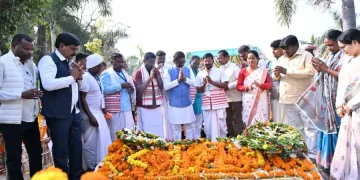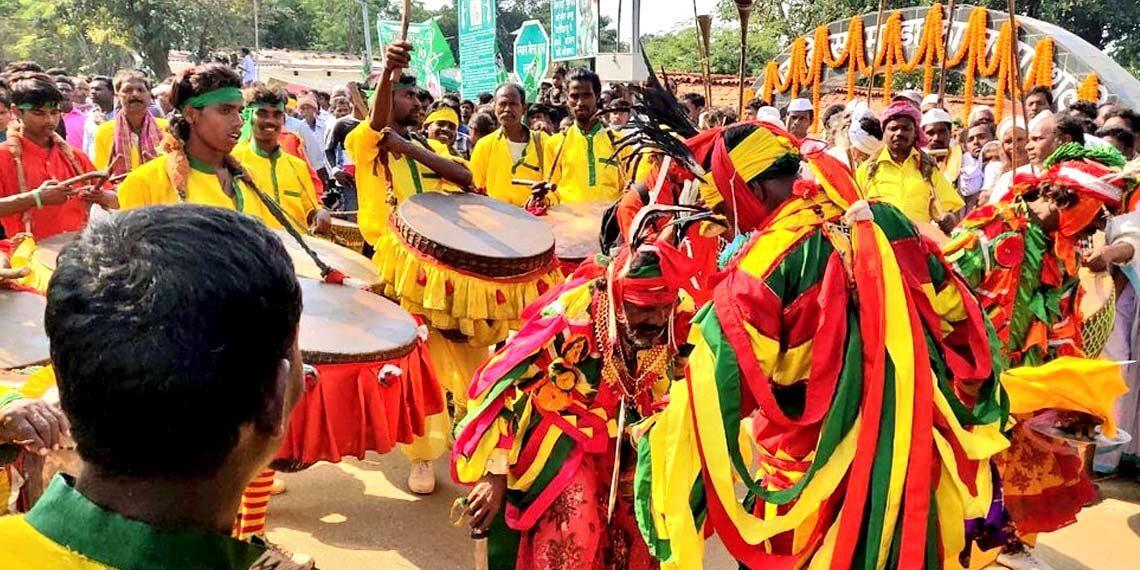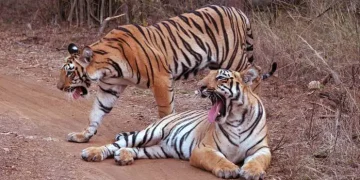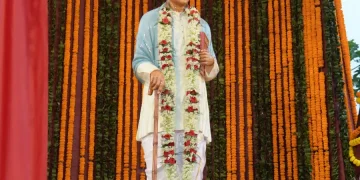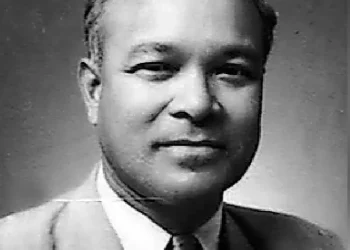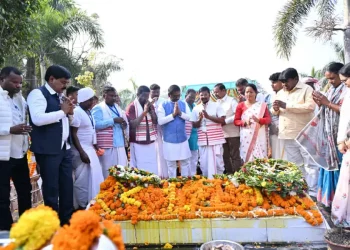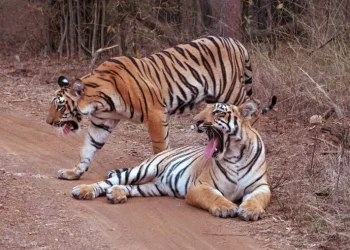Performed during and after harvests, at festivals and social gatherings, the tribal music, folklore and dance forms do not merely serve to entertain but have a social and ritualistic significance as well. They often narrate tales of the epics or mythological and, at times, impart social commentaries too.
The Pratkali (or music of the dawn), more popularly known as Prabhati or Bhinsaria in Nagpuri and other local languages, is a folk music divided into three distinct sections. It begins with Pahil Sanjhi, wherein the ragas are soft and aim to warm up for the grand celebrations ahead. It is followed by Adhratia that begins late in the night or around midnight and continues till early morning. The beats are high and singing and dancing touch their climax. Bhinsaria is sung early in the morning or before sunrise.
Phagua is another important raga, which is sung during the month of Falgun. Phagua songs deify Radha and chant her name. Unfortunately, Phagau is on the verge of extinction now. In the Puchhari raga of Phagua, one party asks a tricky question or riddle, and the other party replies in rhyme. For instance, one side asks through a song which flower saves the honour of mankind, to which the other party replies cotton. In some way, this art form resembles qawwali.
Dohori, as the name suggests, has two teams or sides similar to Phagua. This is commonly a boys versus girls contest. An artiste or a group gives answers to questions on wide-ranging subjects by employing poetry and wit. It is on the lines of the popular Antakshari.
The dances are no less intricate and significant. Be it a change of season or a marriage, a birth or a good paddy harvest, all are accompanied by various forms of dance.
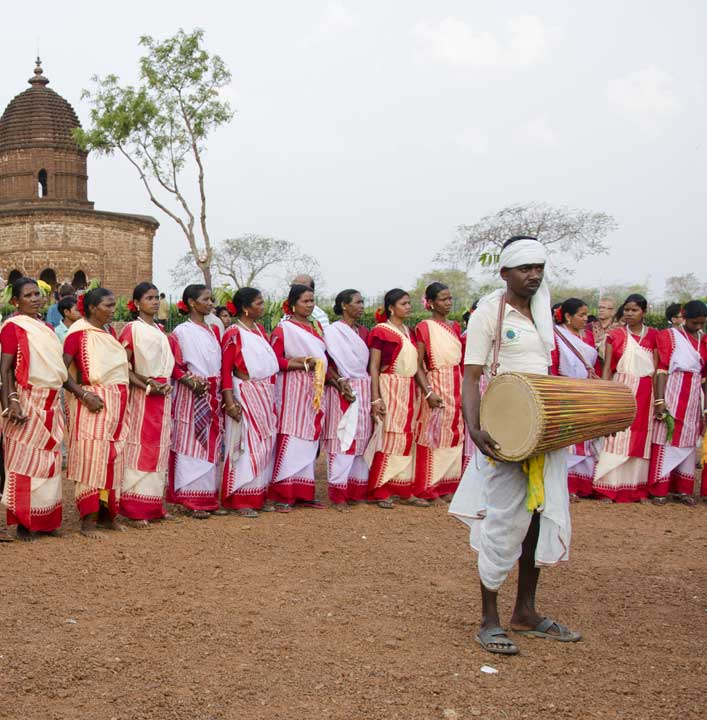
Among the rain dances is the Lahasuya, wherein the double-sided barrel drum, or madol, is used to call for relief during a dry spell.
The Oraon tribe performs Barao to seek Earth’s blessings for plentiful harvest, generally in the month of Baisakh.
Santhal and Nagpuri women dance the Jhenana Jhumur on various occasions, again especially for harvest. Its ‘male’ form, the evocatively named Mardani Jhumur. Also incorporates martial art, partnered by some female dancers and the dhol, shehnai, kartal and jhanj. It is popular among the Nagpuri and southern tribes as The Indian Tribal Music in Jharkhand.

In the popular Jhumair dance, both men and women participate — locking their arms around the torsos of adjacent partners to form a circle. They dance with expression and deft footwork. The attire of the performers is rich and colourful – leaves and feather crowns with tribal clothes. They dance to the tunes of dhol, mandar, sarangi, bansuri and kartal during the harvest season or on festivals.

Another famed dance form, the Chhau, is a depiction of various deities. This is a type of dance drama performed in a large open area with burning torches (mashaal) and large and colourful masks, called chhau masks. Nagada and drums are used for effect as tales of the Mahabharata and Ramayana are enacted out.
The Paika is a speciality of the Munda tribe and is an aggressive dance symbolising preparation for battle. This art form generally forms part of a welcoming ceremony for guests. Paika combines martial arts with dance steps, with the dancers wearing headgear and safety plates on their chest over colourful robes, while carrying a sword and shield. The music of drums, shehnai, narsingha and their is accompanied by the anklet bells of the artistes.
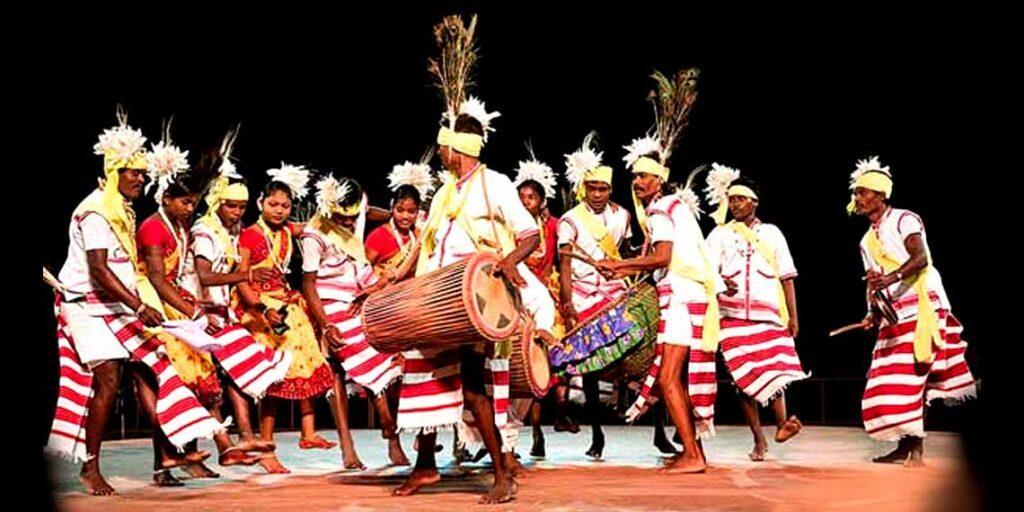
Some other dance forms are the Jhitka and Danga, an expression of happiness, and the light-hearted and humorous Domkach. Traditionally performed by the women of the bridegroom’s family when he brings home his bride after marriage. A men-only form is the Ghora Naach,
performed wearing horse costumes in the Indian tribal music in Jharkhand from the waist down.
However, today, all these beautiful and intricate art forms are threatened. Modernity is eating into the lives of the tribals and destroying much of their culture.
Now, the tourism department of the government, along with cultural associations, are putting their efforts into ensuring the future generations get to see the cultural wealth of Jharkhand.
Credit : Jharkhandculture, commons.wikimedia

